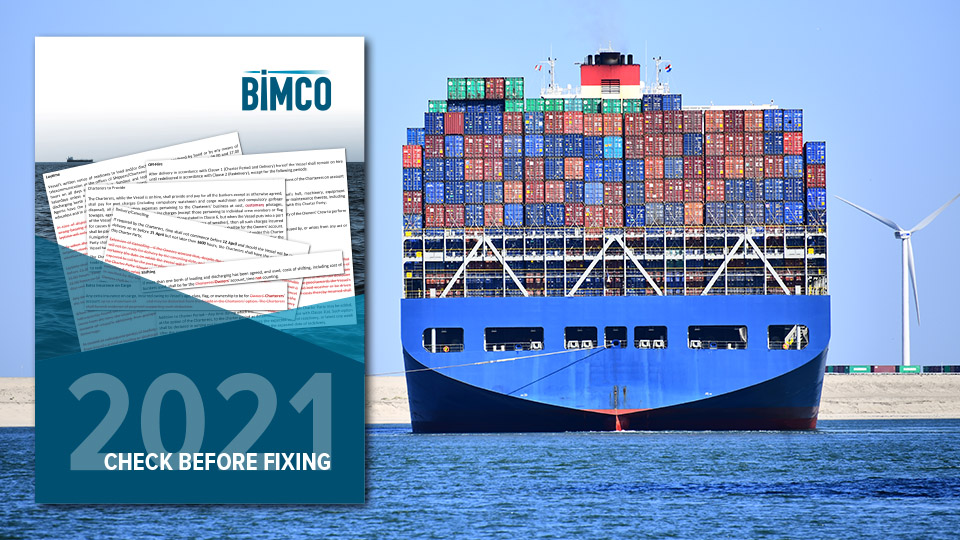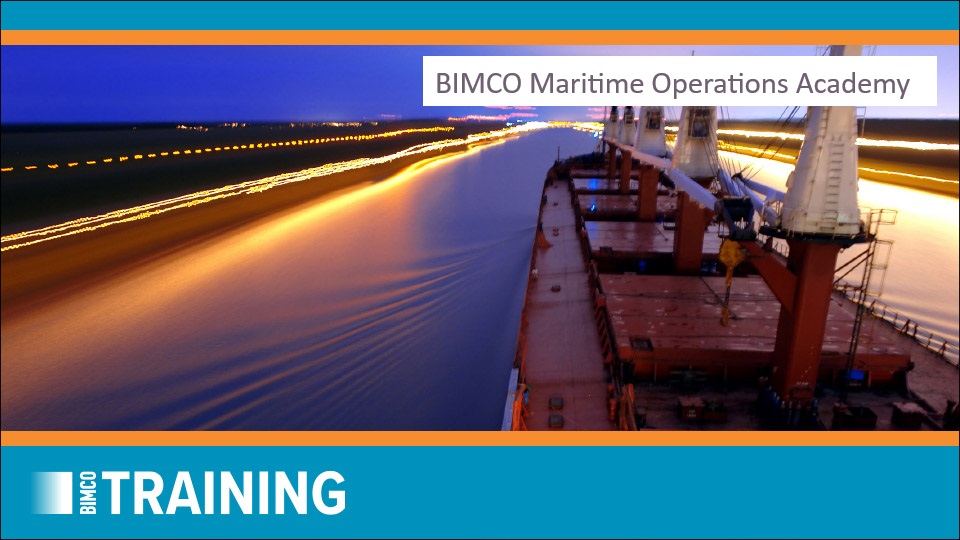Asian Gypsy Moth Clause for Time Charter Parties 2015
Overview
ASIAN GYPSY MOTH IS NOW KNOWN AS FLIGHTED SPONGY MOTH COMPLEX
** SEE THE UPDATED FLIGHTED SPONGY MOTH COMPLEX CLAUSE **
Not all countries have introduced the new name yet, but BIMCO has decided to standardise on Flighted Spongy Moth Complex, abbreviated to FSMC.
Asian Gypsy Moth Clause for Time Charter Parties 2015
BIMCO Asian Gypsy Moth Clause for Time Charter Parties 2015
(a) The Owners shall deliver the Vessel free of Asian Gypsy Moth (AGM). If the Vessel has within the last twenty-four (24) months prior to delivery traded to an area where there is a risk of infestation by AGM, the Owners shall, on delivery, provide an inspection certificate stating that the Vessel is free from infestation by AGM issued by an appropriate and recognised certification body (an AGM Free Certificate) dated no earlier than the date of departure from the last port of call in such area.
(b) Should the Charterers order the Vessel to an area where there is a risk of infestation by AGM, the Charterers shall take all reasonable steps at their expense to mitigate the risk of infestation. If infestation should nevertheless occur, the Charterers shall ensure that such infestation is removed from the Vessel. Without prejudice to this obligation, the Charterers shall provide an AGM Free Certificate from the last port of call in the aforementioned area. Notwithstanding the issuing of such a certificate, should an infestation of AGM be found or suspected, the Charterers shall be responsible for any consequences whatsoever, including but not limited to costs and third party liabilities. The Vessel shall remain on hire throughout.
(c) The Charterers shall redeliver the Vessel free of AGM. If the Vessel has traded to an area where there is a risk of infestation by AGM the Charterers shall, on redelivery, provide an AGM Free Certificate dated no earlier than the date of departure from the last port of call in such area.
Background
The risk of infestation by Asian Gypsy Moth (AGM) is a perennial problem for vessels trading in the Far East during the female moth’s flight season. The risk is particularly high in Korea, Japan, Northern China and the Russian Far East. A number of countries are highly alert to the risk of this invasive and destructive species – notably the USA, Canada, Chile, Australia and New Zealand. Regulations in those countries generally require all vessels arriving in their ports to declare whether they have traded to ports within the high-risk areas in season during the past two years. Some authorities also require the vessel to be certified free of AGM.
Although numerous charter party clauses addressing Asian Gypsy Moth are in circulation, these clauses often contain very specific geographical regions and dates for high-risk seasons. As there is no uniform international definition of the high-risk areas or flight seasons, the use of these clauses may create uncertainty. To tackle this issue BIMCO has developed a generic Asian Gypsy Moth Clause for Time Charter Parties that provides a commercial solution to this problem focusing on the basic obligations and responsibilities of the owners and the charterers in respect of AGM.
Explanatory notes
The Clause places a strict obligation on the owners to deliver the vessel free of AGM with a reciprocal obligation on the charterers at redelivery. Both parties must also provide AGM-free certificates at the relevant time. BIMCO recognizes that in some countries, such as South Africa, it may not be possible to obtain an AGM-free certificate. However, for the purposes of the clause it is assumed that a certificate can be obtained in the majority of cases. Parties will have to address on a case-by-case basis circumstances where it cannot be obtained at the last port of call or the port of delivery.
During the performance of the charter party, it is the charterers’ obligation to reduce the risk of infestation resulting from the vessel’s trading pattern. This obligation not only extends to the ports where the charterers may order the vessel, but also to any cargo loaded on board which may be infested. The provision of phytosanitary certificates or similar during the charter are also the responsibility of the charterers as are the consequences resulting from actual or suspected infestation.
The main objective has been to draft a clause that is simpler and more generic than many of the Asian Gypsy Moth (AGM) clauses currently in circulation. It was decided that references to specific ports and geographical areas were unnecessary and precluded any new countries that may take formal measures to combat AGM in the future, which would limit the “shelf life” of the clause.
BIMCO’s website contains a wealth of useful information about Asian Gypsy Moth including seasonal dates and geographic areas that are updated regularly; lists of recognised authorities that issue phytosanitary and pre-departure inspection certificates; and details of AGM regulations in Australia, Canada, Chile, New Zealand
and the USA.
The above-mentioned information is limited to members of BIMCO. Publicly available information can be obtained directly from the websites of the agricultural authorities of the countries the vessel intends to call at after trading in a high risk area, for instance the U.S.Department of Agriculture (USDA), the Canadian Food Inspection Agency (CFIA) and the Australian Quarantine and Inspection Service (AQIS).
The Clause applies to any and all life stages of the moth and consists of three subclauses:
Sub-clause (a) sets out the owners’ obligation to deliver a vessel free of AGM and to provide an AGM Free Certificate on delivery if the ship has traded to areas where there is a risk of infestation by AGM. The obligation on the owners is strict to reflect common regulatory obligations in countries such as the USA, Canada and Chile. The sub-clause limits the owners’ obligation to provide an AGM-free certificate on delivery to a twentyfour month trading period immediately prior to delivery (where the ship has traded to an area with risk of infestation). This period is consistent with the stringent certification requirements of countries such as the USA and Canada.
Sub-clause (b) covers the obligations of the charterers during the time charter period. The charterers are permitted to order the ship to AGM risk areas, but when doing so they accept responsibility for any resulting infestation, actual or suspected, at their time and expense. Throughout the charter party the charterers are also expected to mitigate the risk of infestation, to remove any infestations from the ship and to provide an AGM Free Certificate from the last port of call within an AGM risk area.
Sub-clause (c) ensures that the charterers’ obligations on redelivery mirror those of the owners on delivery. The charterers must redeliver the vessel free of AGM and with an accompanying AGM Free Certificate, if relevant.
Originally published in BIMCO Special Circular No. 4, 22 January 2015 - BIMCO Asian Gypsy Moth Clause for Time Charter Parties
Asian Gypsy Moth restrictions
Related Help & Advice
Create or edit a contract
The one-stop digital shop for all the standard maritime contracts and clauses you’ll ever need.
Latest Related News
-
New Zealand FSMC ( formerly known as AGM) Regulations
New Zealand Flighty Spongy Moth Complex ( FSMC) formerly known as Asian Gypsy Moth/AGM regulations are issued by the Ministry for Primary Industries (MPI), which include the Craft Risk Management Standard (CRMS) under section 24G of the Biosecurity Act 1993.
-
Australian FSMC ( formerly known as AGM) Regulations
Australian FSMC ( formerly known as AGM) regulations are under the responsibility of the Australian Department of Agriculture and Water Resources (DAFF). Asian Gypsy Moth (AGM) has been changed to Flighted Spongy Moth Complex (FSMC) due to change of name effected in 2022.
-
Argentinian FSMC (formerly known as AGM) regulations
Argentinian FCSM ( formerly known as Asian Gypsy Moth/AGM) regulations are under the auspices of the Argentinian National Service of Agri-Food Health and Quality (SENASA). Asian Gypsy Moth (AGM) has been changed to Flighted Spongy Moth Complex (FSMC) due to change of name effected in 2022.
-
Chilean FSMC ( formerly known as AGM) Regulations
Chilean FSMC ( formerly known as Asian Gypsy Moth/AGM) regulations are issued by the Chilean Agricultural and Livestock Service (Servicio Agricola y Ganadero, SAG), the official Chilean state body responsible for the protection of plant and animal health. Asian Gypsy Moth (AGM) has been changed to Flighted Spongy Moth Complex (FSMC) due to change of name effected in 2022.
-
Canadian FSMC ( formerly known as AGM) regulations
Canadian FSMC ( formerly known as AGM) regulations are issued by the Canada Food Inspection Agency (CFIA) . Asian Gypsy Moth (AGM) has been changed to Flighted Spongy Moth Complex (FSMC) due to change of name effected in 2022.
ELSEWHERE ON BIMCO
Holiday calendar
BIMCO's Holiday Calendar covers general holidays in over 150 countries, plus local holidays and working hours in more than 680 ports around the world.
Learn about your cargo
For general guidance and information on cargo-related queries.





